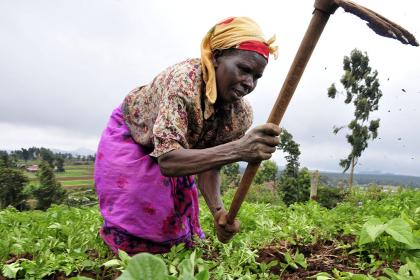
An overarching principle of the Sustainable Development Goals (SDGs) adopted by global leaders in 2015 is to "leave no one behind."
Realizing this vision will require poverty eradication, better income distribution and sustained social progress over the next 15 years. The assessment of performance in implementation of the Millennium Development Goals (MDGs) indicated that Sub-Saharan Africa (SSA) is the only region that did not meet the MDG of halving poverty by 2015. In addition, a recent study found that Africa will increasingly be home to a large part of the world's extreme poor (Beegle et. al. 2016).
These facts suggest that if the international community want to enhance prospects for achieving the SDGs, there has to be a special focus and attention on SSA, particularly the least developed countries in the region. But there also has to be a concerted effort by the international community to engender structural transformation and foster inclusive growth thereby laying a solid foundation for sustained development and ensuring that no one is indeed left behind in the development process.
Technology and innovation are crucial for addressing the challenges of low structural transformation and inclusive development in Africa. For example, technological innovation can enhance competitiveness and trigger a shift of resources from low to high productivity activities thereby inducing transformation of the structure of an economy. It can also foster inclusion through enabling the acquisition of knowledge and skills which permit economic agents to fully participate in, and benefit from, the development process.
Against this backdrop, this paper presents stylized facts on structural transformation, the state of innovation and inclusion in Africa and, more importantly, offers policy recommendations on how to promote technological innovation to trigger structural transformation, build inclusive societies, and enhance prospects for achieving the SDGs in Africa.
The paper is organised as follows:
-
Section 2 discusses channels through which technological innovation could affect structural transformation and inclusion
-
Section 3 presents some stylized facts on structural transformation in Africa
-
Section 4 assesses Africa's performance in achieving the goal of building inclusive societies as reflected in the SDGs
-
Section 5 examines the state of technology and innovation in Africa
-
Section 6 discusses policies that could be adopted to foster technology and innovation with a view to promoting transformation and inclusive development in Africa
-
Section 7 contains concluding remarks




